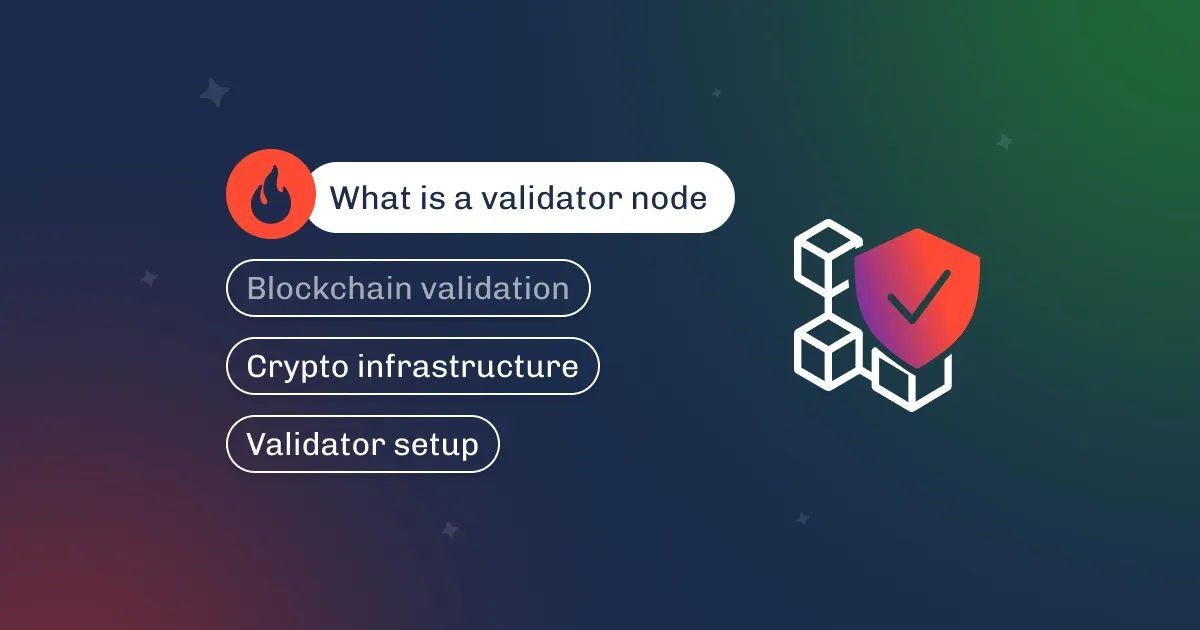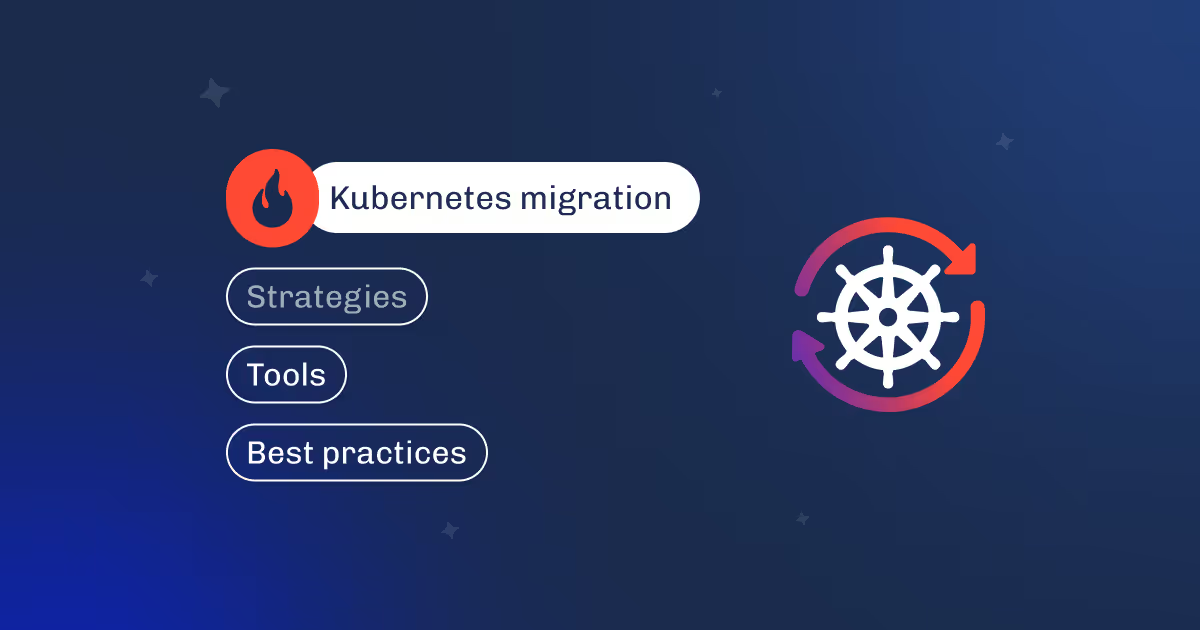

About six months ago, one of our clients approached us with a specific request: “Can you guarantee that our cloud infrastructure will handle over 100,000 requests per second during peak trading hours without any downtime?”
As we’ve demonstrated with the PancakeSwap case, a well-optimized cloud infrastructure can achieve 99.9% uptime, reduce latency, and handle billions of requests per month.
To build such effective cloud infrastructures, you need to understand the project’s main purposes, and future ambitions, and have a solid grasp of its key components.
In this article, we’ll break down the fundamental building blocks of cloud infrastructure, discuss the different adoption models, and explore best practices for designing high-performing systems that can meet even the most demanding requirements.
Cloud infrastructure serves as the foundation of contemporary digital ecosystems, offering a dynamic and adaptable environment to support sophisticated workloads. It includes hardware servers, data storage systems, network elements, and virtualization tools, all working together to support dynamic resource allocation and efficient management.
Cloud infrastructure is widely used across various industries, both in Web2 and Web3 environments, due to its adaptability and high performance.
In Web2, cloud infrastructure plays a critical role in handling large-scale applications such as eCommerce, data analytics, and financial services. It supports reliable data storage, quick data processing, and scalable environments, enabling businesses to run applications with high availability and low latency.
Decentralized projects, on the other hand, leverage cloud services to enhance transparency, eliminate intermediaries, and improve operational efficiency. For example, blockchain networks leverage cloud infrastructures for high availability, computational power, and secure data storage.
With its ability to handle large-scale transactions, maintain low latency, and ensure data redundancy, cloud infrastructure is critical for validating transactions, maintaining consensus, and supporting decentralized applications (DApps).

One of the most popular ways to build and access cloud infrastructure is through Infrastructure as a Service (IaaS). This approach allows companies to leverage virtualized computing resources on demand, providing flexibility and control over their infrastructure.
We’ll explore more about IaaS and its benefits later in this article.
Infrastructure cloud service offers the essential components of computing, such as virtual machines, data storage systems, and connectivity solutions. It enables businesses to access and manage these core components over the internet without investing in or maintaining physical hardware.
With cloud infrastructure services, users can deploy, run, and scale applications while retaining control over operating systems, applications, and data. This model offers flexibility and scalability, making it ideal for a wide range of use cases, from hosting simple websites to running complex, enterprise-level applications.
Key benefits of cloud-based infrastructure services:
Cloud infrastructure and services are commonly used for scenarios that require high computational power, such as big data analytics, blockchain nodes, web hosting, and disaster recovery.
Cloud infrastructure consists of the storage system, compute resources, virtualization layers, and networking components, each enabling dynamic resource allocation and supporting various additional blocks, e.g., — blockchain nodes, data analytics, and machine learning.

Cloud computing infrastructure contains the core, powering virtual machines (VMs), containers, and serverless applications. High-performance servers are used to run demanding workloads like blockchain nodes, which need significant processing power for validating transactions and executing smart contracts.
Key parameters to consider include the number of vCPUs (virtual CPUs), RAM size, and GPU availability for intensive tasks. For example, setups with more vCPUs and RAM are crucial for transaction validation, while GPUs are essential for AI-based analytics or PoW mining, enabling faster complex calculations or processing.
Cloud storage systems are designed to offer high availability, durability, and scalability to support both structured and unstructured data. There are three primary types:
Networking infrastructure ensures secure, low-latency connections and data transfer. Key components include Virtual Private Clouds (VPCs) for resource isolation, load balancers for distributing traffic, and direct connections for high-speed data transfer.

Important parameters to consider are bandwidth, latency, and throughput, which are critical for managing blockchain node communication, reducing delays, and ensuring reliable performance during traffic spikes.
Virtualization separates resources into isolated environments using hypervisors, enabling efficient resource utilization. This layer supports the creation of VMs, containers, and serverless functions that can be scaled and managed independently. Key parameters include CPU allocation, memory usage, and container density.
When dealing with numerous environments spread across different clouds or requiring complex usage scenarios, a more advanced management tool is necessary. This is where orchestration tools like Kubernetes come into play.
Orchestration provides an additional layer of management for containerized applications, automating deployment, scaling, and operation of application containers. Kubernetes, for instance, resolves issues such as automated resource allocation, load balancing, and self-healing capabilities, making it ideal for scenarios with non-linear scaling or dynamic workloads, such as managing blockchain nodes or DApps in flexible environments.
Cloud and infrastructure services provide multiple security layers, including network isolation, identity management, and data encryption, to protect resources from unauthorized access and attacks. Compliance features ensure that organizations meet regulatory requirements across different jurisdictions.

Cloud providers support a wide range of certifications and compliance standards to meet global and industry-specific regulations.
For instance, AWS has built GDPR-compliant architectures for EU-based fintech companies, ensuring data residency and protection within the region.
Microsoft Azure collaborated with a healthcare provider to create a HIPAA-compliant cloud infrastructure, enabling secure storage and management of sensitive patient records.
Similarly, Google Cloud’s solutions have helped blockchain platforms achieve SOC 2 compliance by implementing security and encryption standards that meet stringent financial industry requirements.
The table below highlights the key differences and strategies related to security and compliance in cloud infrastructure.
| Aspect | Security | Compliance |
| Definition | Measures and controls to protect cloud resources from threats and unauthorized access. | Adherence to legal, industry, or regulatory standards to ensure lawful and ethical operations. |
| Focus | Network protection, monitoring, encryption, identity management. | Meeting standards like GDPR, HIPAA, and PCI-DSS based on the nature of the data processed. |
| Examples | VPC isolation, DDoS protection, key management, intrusion detection. | GDPR for personal data, SOC 2 for service organization controls, and PCI-DSS for payment data. |
| Responsibility | Shared between the cloud provider and user (shared responsibility model). | Mainly the responsibility of the company using these solutions. |
| Outcome | Prevents data breaches, unauthorized access, and service disruptions. | Avoids legal penalties, maintains trust, and ensures smooth operation within regulated markets. |
| Strategy | Implement IAM policies, encrypt sensitive data, and monitor network activity. | Regular audits, maintaining documentation, and using compliance-certified infrastructure. |
While security and compliance are both critical aspects of cloud architecture, they serve distinct purposes. Security focuses on implementing technical measures and controls to safeguard cloud resources from unauthorized access, data breaches, and other threats. Compliance, on the other hand, ensures that an organization adheres to legal, industry, or regulatory standards such as GDPR, HIPAA, or PCI-DSS.
Security strategies include measures like virtual private cloud (VPC) isolation, DDoS protection, and encryption, while compliance strategies revolve around regular audits, maintaining documentation, and using compliance-certified infrastructure. Responsibility for security is often shared between cloud providers and users, while compliance is typically the sole responsibility of the company.
Cloud infrastructure can be thought of as the individual building blocks, like the bricks and materials used to construct a building. In contrast, cloud architecture is akin to the blueprint that tells you how to arrange these elements to create a strong, functional structure that serves its purpose.
Simply put, infrastructure is what you have (servers, storage, and network), while architecture is how you put it all together to create an efficient system. With a proper architecture, these components work cohesively to ensure stability, scalability, and security, making it possible to meet business objectives and handle complex workloads seamlessly.
Cloud infrastructures can be deployed using three main models — public, private, and hybrid — each tailored to meet different use cases depending on an organization’s needs for control, security, and scalability.
Additionally, these deployment models are supported by three primary cloud service infrastructure layers: IaaS, Platform as a Service (PaaS), and Software as a Service (SaaS).

Cloud service models can be thought of as different layers of service abstraction, each offering varying levels of control and management.
While IaaS, provided by platforms like AWS or Google Cloud, gives direct access to computing resources, PaaS simplifies development processes, as seen with providers like Heroku.
SaaS solutions, on the other hand, are fully managed software options (e.g., Salesforce or Google Workspace) that offer users a straightforward experience.
Moreover, there are two other models with growing popularity. Function as a Service (FaaS) / Serverless Computing allows developers to deploy individual functions that run in response to specific events, without the need to manage servers. It automatically scales resources based on demand and typically employs a pay-per-execution billing model, making it ideal for event-driven applications and microservices.
Container as a Service (CaaS) provides a managed platform for deploying, managing, and scaling containerized applications. Users focus on application development, while the cloud provider handles orchestration, networking, and scaling, supporting DevOps practices through continuous integration and delivery workflows.
Cloud adoption models can be categorized into five key types, each tailored to meet specific requirements based on ownership, access, and usage.
| Model | Description | Advantages | Challenges | Examples |
| Public cloud | Services offered over the public internet for general use. | Cost-effective, scalable, maintenance-free. | Security concerns, limited customization. | AWS, Microsoft Azure, Google Cloud |
| Private cloud | Dedicated cloud infrastructure for a single organization. | Increased security, customization options. | Higher costs, management overhead. | VMware Private Cloud, Azure Stack |
| Hybrid cloud | Combines public and private clouds for flexibility. | Flexibility, scalability, control over sensitive data. | Complex management, integration issues. | AWS Outposts, Google Anthos |
| Multi-cloud | Utilizes multiple cloud services from different providers. | Avoids vendor lock-in, increased redundancy. | Complexity in management, interoperability issues. | Using AWS, Azure, and Google Cloud together |
| Community cloud | Shared cloud infrastructure among several organizations. | Cost-sharing, collaboration among similar organizations. | Limited control, compliance concerns. | Government clouds, healthcare clouds |
TL;DR summary
Cloud infrastructure encompasses various physical and virtual components such as compute resources, storage systems, and networking elements that form a scalable and adaptable foundation for digital operations. From supporting traditional Web2 applications to complex Web3 ecosystems, cloud infrastructure enables businesses to scale operations, ensure high availability, and meet compliance standards.
While infrastructure refers to the core components, architecture is the strategic organization and configuration of these elements to optimize performance, stability, and scalability.
At Dysnix, cloud engineers provided tens of tailored cloud solutions for both Web2 and Web3 projects. Contact us to get expert advice from our DevOps experts and discuss your case.






